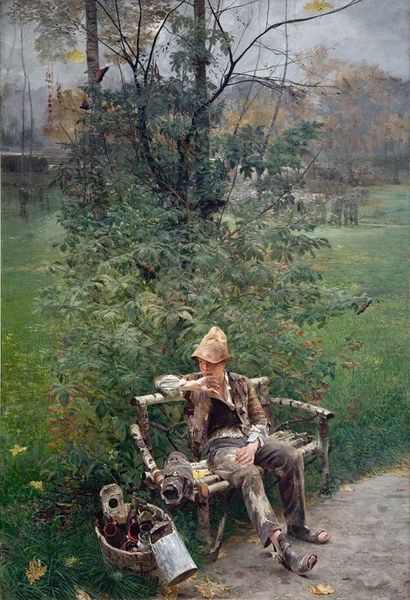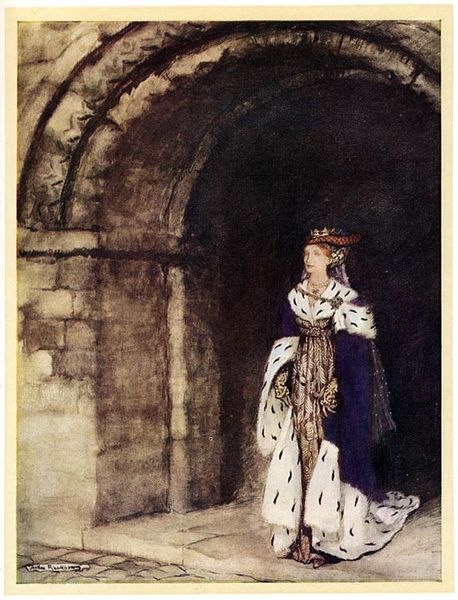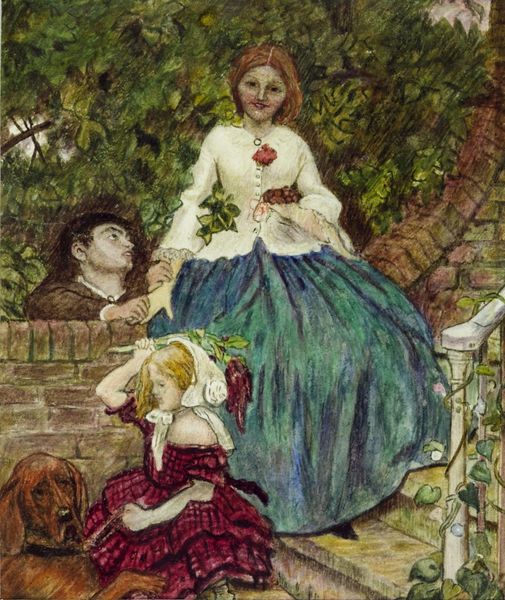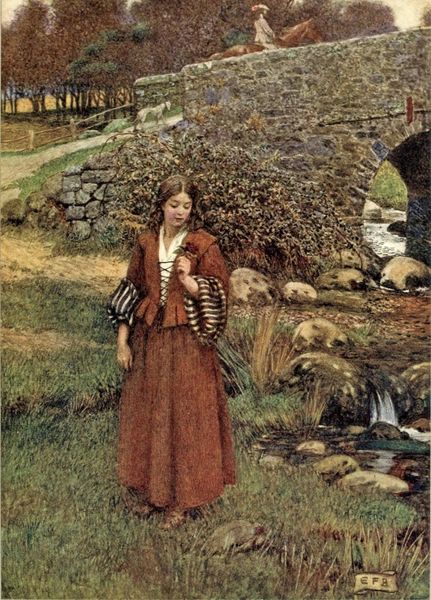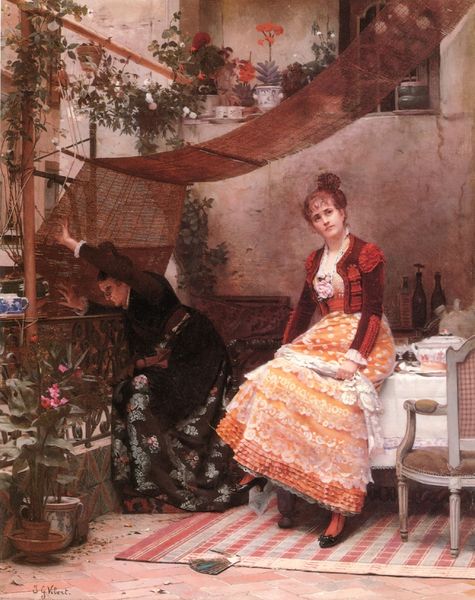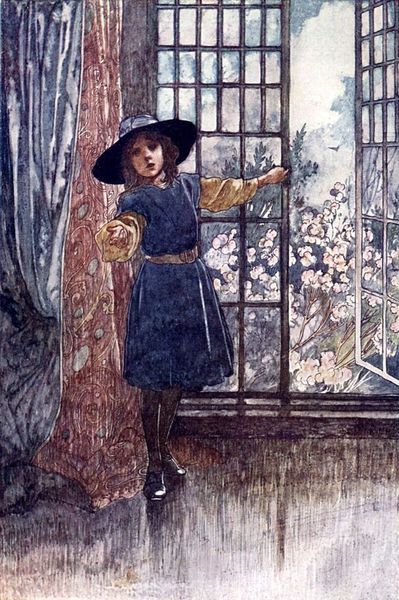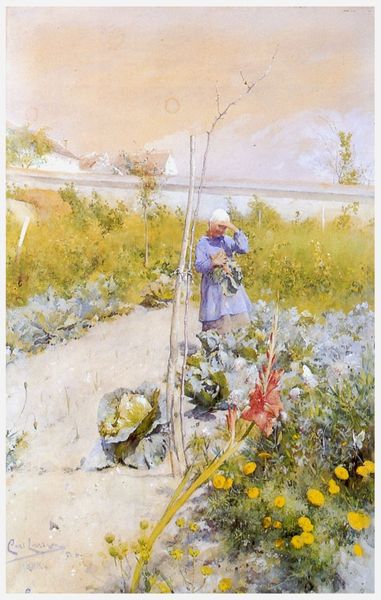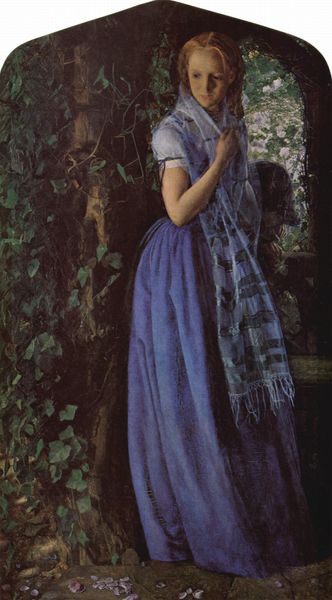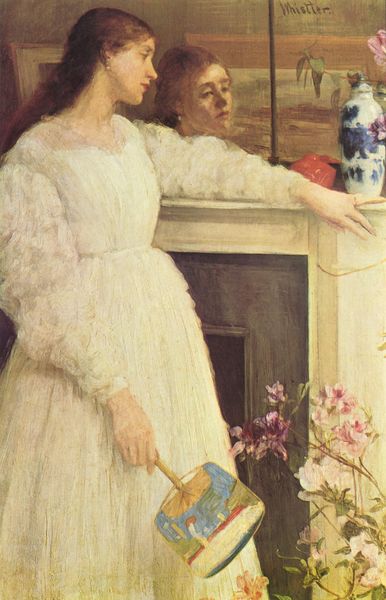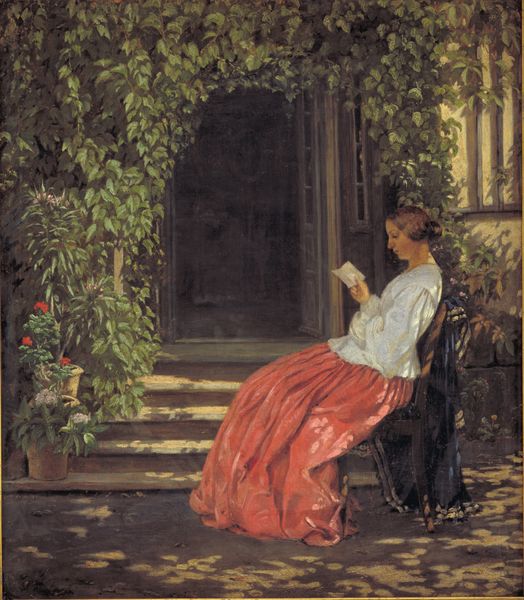
Copyright: Public domain
Editor: Here we have Eleanor Fortescue-Brickdale’s “Woman Reading,” created in 1919. It's an interesting watercolor with lovely Pre-Raphaelite style details. I’m struck by the woman's contemplative pose. What do you see in this piece? Curator: Well, considering the context of 1919, just after the First World War, it speaks volumes. While seemingly a quiet domestic scene, consider the position of women in society at that moment. Did the war shift the paradigm? Was it permanent? Editor: Interesting. I hadn’t really thought about that aspect. So you’re saying this image, while gentle, reflects significant social change? Curator: Exactly! What does her attire signify? It's an odd combination of what could be an upper-class dress coupled with the white apron; what are we to make of that? Is she confined by societal expectations even in her leisure? Brickdale seems to place her at a remove from nature, alongside nature perhaps, and not an actual actor in it. A wall is adjacent, a ladder is there but seemingly not there, an invitation to another place which she can't take. Don't you think that adds another layer? Editor: Yes, definitely. The ladder almost mocks her situation; it's there but serves no real purpose. I suppose I’d always just appreciated the romantic aesthetic. Curator: And it is beautiful. But part of appreciating that beauty, and the work as a whole, is understanding its place in cultural history and what it reflects about the lived experiences of women at the time. This can help inform the political implications. Editor: That’s given me a lot to think about, I can see this work in a completely new way now. Thanks! Curator: My pleasure. Now, let’s explore some other works in the exhibit, considering these broader cultural implications…
Comments
No comments
Be the first to comment and join the conversation on the ultimate creative platform.
